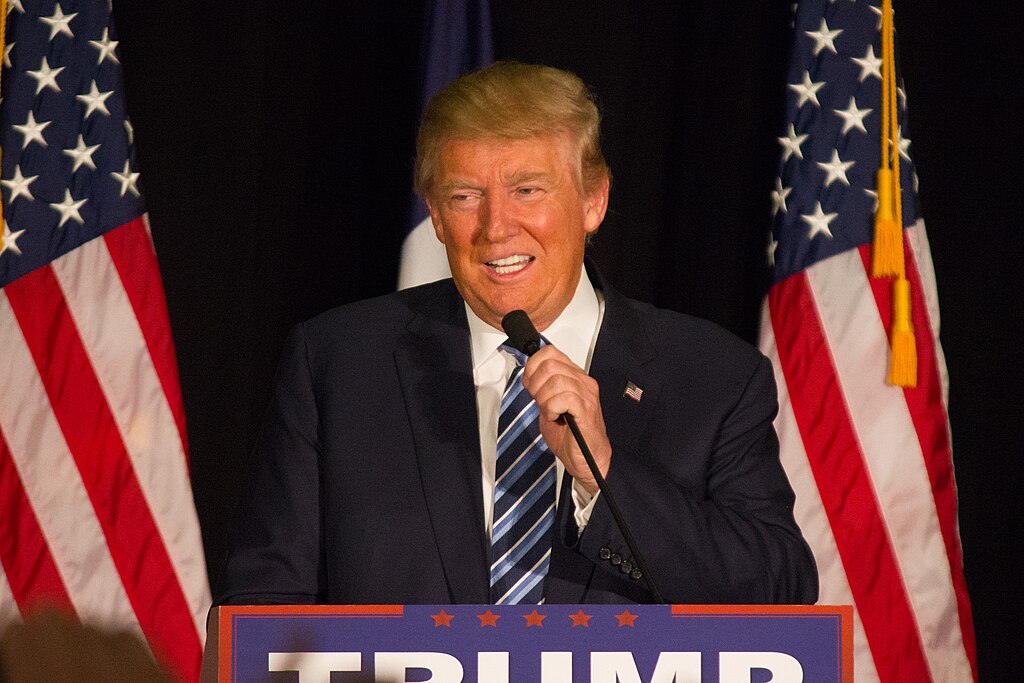A new electoral college projection, reportedly based on a model developed by Nate Silver, has sparked significant discussion by predicting a decisive victory for Donald Trump in the 2024 U.S. presidential election. The model allocates Trump 312 electoral votes, leaving Vice President Kamala Harris with just 226. If accurate, these numbers suggest Trump could reclaim the White House in a stunning fashion, securing a substantial lead over his opponent.
The forecast, which excludes toss-up states, paints a clear path for Trump to the presidency. According to the model, Trump is set to perform particularly well in swing states, while Harris is expected to maintain her grip on Democratic-leaning regions. The states expected to play a pivotal role in Trump’s projected victory include Florida, Texas, and Ohio—battlegrounds where Trump has traditionally performed strongly. In contrast, Harris is forecasted to secure states like California and New York but with little hope of flipping traditionally Republican strongholds.
Disclaimer:
ECONOTIMES cannot independently verify the accuracy of this electoral college model or its data sources. The model’s predictions are based on various polls and methodologies that may change as the 2024 race progresses.
The prediction of 312 electoral votes for Trump has fueled optimism among his supporters, who view this model as evidence of his enduring popularity and potential to win back the presidency. Economic issues, inflation, and immigration remain central themes in Trump's campaign, areas where polls consistently show him leading Harris among key demographics, including independents and swing voters. Trump’s favorability on economic matters, in particular, is a driving force behind his projected success in swing states.
On the other hand, the Harris campaign is likely to dispute the model, pointing to early polls showing a close national race and a competitive fight in several key states. Harris has recently gained ground among certain voter groups, particularly in urban areas and among younger voters, which could complicate Trump’s path to victory if these trends continue.
Electoral college models are a common tool used in the months leading up to the election, offering insight into potential outcomes based on current polling and historical trends. However, predictions this far ahead of the election should be taken cautiously, as much can change before voters head to the polls in November 2024.
With both candidates focusing heavily on swing states and undecided voters, the 2024 race is shaping up to be one of the most contentious in modern U.S. history. As the campaign season progresses, both Trump and Harris will likely intensify their efforts in the battleground states that could ultimately decide the election.
While the current electoral model gives Trump the upper hand, history has shown that the political landscape can shift dramatically in the final months leading up to Election Day. Both candidates are expected to ramp up their campaigning, making the final stretch of the 2024 race one to watch closely.



 Trump Says $2,000 Tariff Dividend Possible Without Congress Approval
Trump Says $2,000 Tariff Dividend Possible Without Congress Approval  Syria Announces Ceasefire With Kurdish Forces as U.S. Pushes Integration Deal
Syria Announces Ceasefire With Kurdish Forces as U.S. Pushes Integration Deal  Trump Says U.S. and NATO Will Reach Agreement on Greenland’s Future
Trump Says U.S. and NATO Will Reach Agreement on Greenland’s Future  Russian Drone and Missile Attack Disrupts Power and Water in Kyiv
Russian Drone and Missile Attack Disrupts Power and Water in Kyiv  European Leaders Unite in Davos as Trump’s Greenland Threat Sparks Trade Tensions
European Leaders Unite in Davos as Trump’s Greenland Threat Sparks Trade Tensions  Supreme Court Tests Federal Reserve Independence Amid Trump’s Bid to Fire Lisa Cook
Supreme Court Tests Federal Reserve Independence Amid Trump’s Bid to Fire Lisa Cook  Ukraine Unveils New Drone-Based Air Defence Strategy Amid Rising Russian Threats
Ukraine Unveils New Drone-Based Air Defence Strategy Amid Rising Russian Threats  Trump Says U.S. Will Soon Target Land Routes for Drug Trafficking
Trump Says U.S. Will Soon Target Land Routes for Drug Trafficking  Trump’s Greenland Ambition Sparks NATO Tensions, Trade War Fears, and Global Market Turmoil
Trump’s Greenland Ambition Sparks NATO Tensions, Trade War Fears, and Global Market Turmoil  Russian Air Attacks Plunge Kyiv Into Darkness, Raise Nuclear Safety Fears
Russian Air Attacks Plunge Kyiv Into Darkness, Raise Nuclear Safety Fears  JD Vance and Wife Usha Announce They Are Expecting Fourth Child in July
JD Vance and Wife Usha Announce They Are Expecting Fourth Child in July  Trump Signals Potential Role for Maria Corina Machado in Venezuela as U.S. Policy Tone Shifts
Trump Signals Potential Role for Maria Corina Machado in Venezuela as U.S. Policy Tone Shifts  Trump Signals Possible Harvard Deal Amid Ongoing Tensions
Trump Signals Possible Harvard Deal Amid Ongoing Tensions  Trump Criticizes NYSE Texas Expansion, Calls Dallas Exchange a Blow to New York
Trump Criticizes NYSE Texas Expansion, Calls Dallas Exchange a Blow to New York  Trump Administration Appeals Judge’s Order Limiting ICE Tactics in Minneapolis
Trump Administration Appeals Judge’s Order Limiting ICE Tactics in Minneapolis  Trump Rejects Talks With Maduro Amid Election Interference Allegations
Trump Rejects Talks With Maduro Amid Election Interference Allegations  Japan Government Bond Rout Deepens as Election Spending Fears Shake Markets
Japan Government Bond Rout Deepens as Election Spending Fears Shake Markets 




























